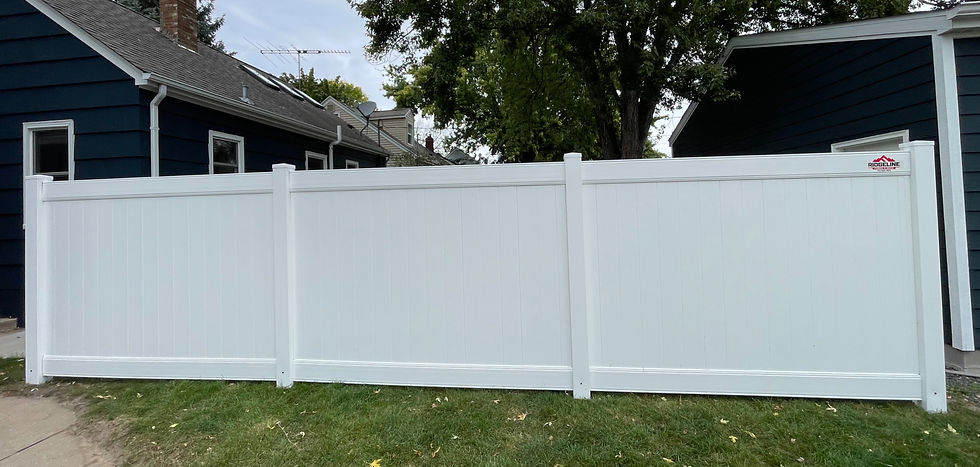What Kind of Yard Preparation Should I do Before Installing a Fence?
- Maxwell Wiczek
- 3 days ago
- 3 min read

Preparing your yard properly before installing a fence can save you time, money, headaches and it helps ensure your fence is built to last. Here are the key steps to yard prep and why each one matters:
Verify property lines & check for easements
Confirm exactly where your property ends. Installing the fence even a few inches over the line can lead to disputes or the need to move the fence. Nearly all properties have metal property pins. To avoid hiring a surveyor, you may locate and expose these pins on your own. If you are unable to locate the pins on the property due to them being too far underground, others have used metal detectors to help locate them. Additionally we recommend double checking if you may have any easements (for utilities and sewer) where you might be restricted from placing posts.
Check local permits, zoning & rules
Many cities or HOAs have rules about fence height, materials, setback from property/sidewalk. Some installations require a permit before digging or building. Getting this sorted avoids fines or having to redo parts. You are able to find out if your city requires a permit for a fence installation by visiting your city’s website. Should you decide to work with Ridgeline Fence and Deck, we will take care of all the permitting needs for your fence installation!

Locate underground utilities
This step in the fence building process is crucial. Before digging post holes, call your utility-marking service (in the U.S. often “811”) so they mark gas, electric, water, telecom lines. Hitting a utility line can be dangerous and very costly.
Clear and prepare the fence line area
You will thank yourself later for taking the time to clear and prepare the fence line area. We recommend removing rocks, old fencing, large roots, stumps, overhanging branches, debris, basically anything that will interfere with digging or installing. To ensure a clean and straight fence line, we also recommend mowing or trimming the grass so the fence line is clearly visible and accessible. You do not want to be the neighbor with a crooked fence!
Assess slope, drainage & soil conditions
If your yard slopes or has uneven terrain, this will affect how your fence will be installed. You may need to install stepped panels. Step Panels mean that each fence panel stays level (horizontally), but the posts are set at different heights so the top of the fence runs in a “stair-step” pattern following the slope.We also recommend checking for poor drainage or spots where water pools. If your fence stays in standing water for extended periods of time, erosion can potentially undermine the fence post stability over time. Lastly, it is very important to know your soil type (clay, sand, or rocky). This will impact how deep the posts actually need to go and what sort of support is needed.
Mark the layout of the fence & gates
The easiest way to mark your fence layout is to use either stakes or string lines. Visualizing the fence line will also help you confirm the outline where the fence will go. Additionally, we recommend to clearly mark where gates will be, how wide, how they will swing, and ensure ground is suitable for gate posts. The last thing you want to encounter with your installation is a gate not fitting or not staying in place!
Communicate with neighbors (if applicable)
Communicate with your neighbor about your fence installation! If the fence runs along a shared boundary, talk to your neighbor ahead of time. It’s courteous and helps avoid conflicts. You’ll never know how long you will be next to your neighbor, it will be well worth it to take a moment to let your neighbor know of your construction plans. They may even share the cost or share access issues for installation. Good communication helps the job go smoothly.
Putting in a fence is more than just digging some post holes and hanging panels. Taking the time to prepare the yard properly helps ensure the installation goes smoothly, looks good, and lasts a long time. By verifying property lines, clearing the work area, assessing terrain and drainage, marking layout, and coordinating with neighbors/utilities—you're reducing risk and setting the project up for success.





Comments